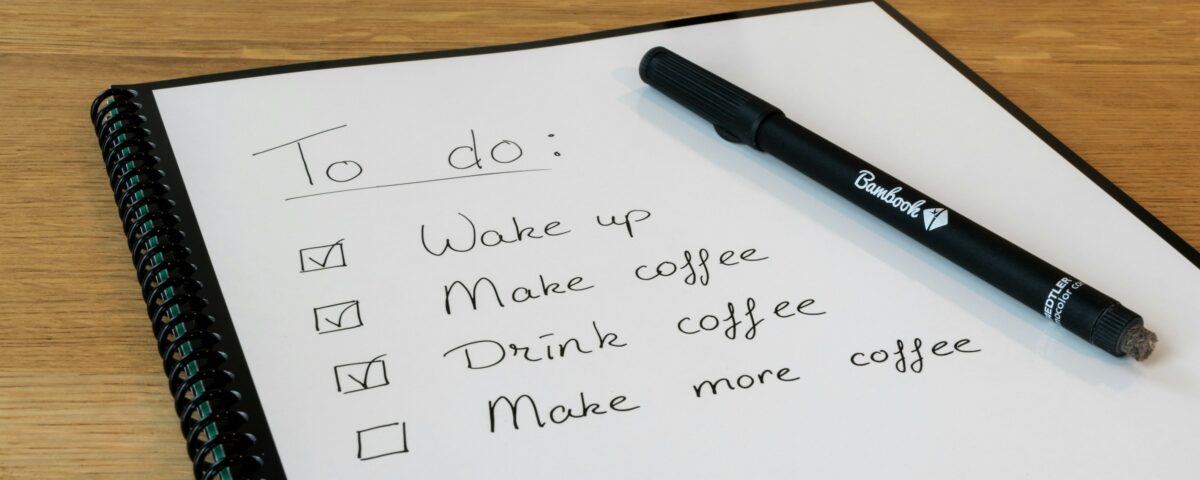
“Me” and “We”: Balance While Navigating Life Changes
August 21, 2024
Growing Resilience in Kids
September 4, 2024It’s hard to follow a routine when no two days are alike, when you (or your child) are not inherently organized, or when you are going through a major transition. You would love to have more structure in your life, but it is hard to stick to a schedule when life is always changing. After decades of working with many different families, dealing with many challenges, I developed a process for creating resilient routines that work.
Your brain likes structure and yet you must have flexibility. This process allows you to create both with one system. The goal of having resilient routines is to adapt and change them to meet your needs while saving yourself from daily decision making about the basics. You build in tasks that prepare you for the next day so that each day runs a little more smoothly. You can use these lists to create agreements among family members that allow you to work together better. For individuals and families who need external structure resilient routines provide that with flexibility.
I will describe the process of creating the routines here with some guidelines about how to use them at the end.
Creating Resilient Routines:
- Create 1-3 lists for those times of day where you need structure. I recommend starting with evening/bedtime as this sets you up for better sleep and a good start to the next day. Other times of day when routines are helpful are in the morning and after school or work.
- Start with short lists of your most important tasks. “Dinner, meds, straighten kitchen, and prep for the morning.”
- As you use your list, put things in an order that makes sense for your situation. Let’s say the list is for your child in the morning. Perhaps for this child to go to school with a clean shirt the most logical order is “breakfast, brush teeth, wash face, comb hair, and then get dressed.”
- Pay attention to how long it takes you to get the list done, allowing you to plan or adjust as needed. This allows you to use the list no matter your schedule. My full morning list takes me 1 ½ hours partly because I wake up slowly. So, if I plan to be out the door at 8am, I must get up at 6:30. If I have to leave earlier, I will do more prep the night before.
- Anchor these lists at times of day, not specific times. Evening lists often start with dinner, but what if you get home late after a practice and you grabbed dinner on the way? The list is partly done and still gives you guidance for what else needs to be finished for the night.
- Keep the list flexible. Breakfast might be a fully cooked meal or a granola bar as you go out the door. After school lists usually include reading or homework which might take 20 minutes or 2 hours. A younger child’s list might be to do the homework while an older student might need to plan homework around other activities.
- In the beginning, set an alarm to remind you to look at your list.
Suggestions When Getting Started
Evenings First
Start with a bedtime or evening list that allows you to go to bed at a reasonable time and to prep for the morning. Do it on your phone screen or a piece of paper so you can edit it as you go. Keep it short. If you always brush your teeth no matter what you don’t have to write it down. Add a morning or afternoon list if it is helpful. Many people find that starting their evening list around dinner allows them to take a pause to think about how to spend their evening. Start with yourself, since you are your first responsibility.
Helping Others
For those of you with kids or other people you talk through their day: If your day has a lot of “did you…” in it, you can start them on their own list. Start small. For your younger child – perhaps you want them to toss their pj’s in the hamper, turn off their light, and get their shoes on before they come downstairs. Write or draw this list. Then instead of asking about each detail ask, “did you finish your list?” The long-term goal is to teach them to pay attention to what they need to do. I avoid using rewards for this and instead point out logical consequences. “Once we have our lists done, we can relax until it is time to go.”
Family Communication
Everyone has their own things they need to do for themselves. In some families, couples find it useful to have a list they work on together or lists for kids that parents both encourage. Developing resilient routines together can help with communication. There is no right or wrong list. The question is always, “is this working for you?” You are the author of your lists. You can decide on any day to skip an item or to do the whole list as quickly as possible to get on with the day/evening.
Developing resilient routines allows you to have the structure and the flexibility you need to pursue your goals. Creating your own list helps you focus on what you need to thrive today and tomorrow. Working with your family to create lists together fosters communication around schedules and responsibilities. As you work toward creating lists that work for you, please reach out with comments or questions to resilience@learnmodelteach.com. I will follow up with a Q&A session about how to use these lists to support your self-care.
Peace,
Laura




